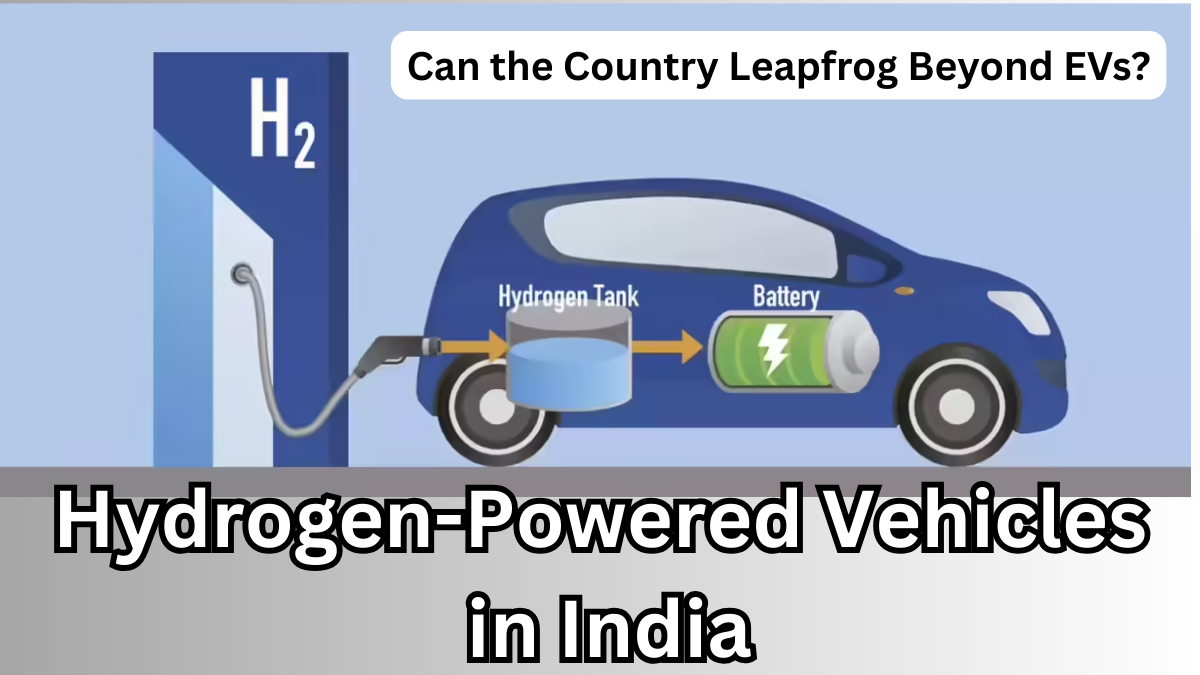As India accelerates towards cleaner mobility, electric vehicles (EVs) have been at the forefront of the green revolution. However, a new contender is making waves: hydrogen-powered vehicles. With the promise of faster refueling, longer ranges, and zero emissions, hydrogen-powered vehicles India could potentially redefine the future of transportation.
But can India realistically leapfrog beyond EVs and embrace hydrogen cars as a mainstream solution? Let’s explore.

Why Hydrogen-Powered Vehicles Are Gaining Attention
Hydrogen cars work on fuel cell technology, converting hydrogen into electricity to power the motor. Unlike traditional EVs, they don’t rely on lithium-ion batteries and offer several advantages:
-
Faster Refueling: Refills take just 3–5 minutes compared to hours for EV charging
-
Longer Range: Most hydrogen vehicles can travel 500–700 km on a single tank
-
Zero Emissions: Only water vapor is emitted, making them a truly clean mobility solution
-
Lightweight: No heavy batteries, resulting in improved energy efficiency
Hydrogen cars are emerging as a promising alternative for sectors where EV adoption faces limitations, such as long-haul trucking and commercial transportation.
Current Hydrogen Vehicle Scenario in India
India is still in the early stages of hydrogen mobility adoption. However, the government and private players are taking significant steps:
| Aspect | Current Status | Future Outlook |
|---|---|---|
| Government Policy | National Hydrogen Mission launched in 2021 | Focus on production, storage, and transportation infrastructure |
| Infrastructure | Limited hydrogen refueling stations | Plans to install 50+ stations by 2030 |
| Automakers | Tata Motors, Hyundai exploring hydrogen prototypes | Partnerships with global firms for technology transfer |
| Investment | ₹8,000 crore proposed for hydrogen initiatives | Expected to attract more private investment in next 5 years |
Hydrogen vs EVs – What India Needs to Consider
| Factor | Hydrogen Cars | Electric Vehicles |
|---|---|---|
| Refueling Time | 3–5 minutes | 30 mins – 12 hours |
| Range | 500–700 km | 250–450 km |
| Infrastructure | Sparse | Rapidly growing |
| Cost | High upfront cost | Falling battery costs |
| Environmental Impact | Zero tailpipe emissions | Low emissions, depending on electricity source |
Hydrogen cars may not replace EVs immediately, but they complement them, especially in commercial and heavy-duty sectors.
Challenges for Hydrogen-Powered Vehicles India
Despite the advantages, several obstacles remain:
-
High production costs of green hydrogen
-
Lack of widespread refueling infrastructure
-
Technological challenges in fuel cells
-
Public awareness and acceptance
Addressing these challenges will be key for hydrogen-powered vehicles India to transition from niche to mainstream.
The Road Ahead: Clean Mobility Beyond EVs
India’s journey towards clean mobility will likely involve a mix of EVs, hybrid vehicles, and hydrogen cars. Hydrogen’s potential is particularly promising for:
-
Long-distance logistics and freight
-
Public transport buses
-
Industrial vehicles and forklifts
With strategic investments and policy support, hydrogen cars could become a strong EV alternative in India’s clean mobility ecosystem.
FAQs
Q1. Are hydrogen cars better than electric vehicles?
Hydrogen cars have advantages in refueling speed and range, making them ideal for heavy-duty transport, whereas EVs are better for urban commuting.
Q2. How many hydrogen refueling stations exist in India?
Currently, hydrogen refueling stations are very limited, but government plans aim to establish at least 50 by 2030.
Q3. What is the cost of hydrogen cars in India?
Hydrogen vehicles are expensive upfront due to fuel cell technology, but running costs may be lower than conventional vehicles in the long term.
Q4. Can hydrogen vehicles help India achieve its clean mobility goals?
Yes, they can complement EVs and reduce emissions, especially in sectors where long-range and heavy loads are needed.
Click here to learn more
